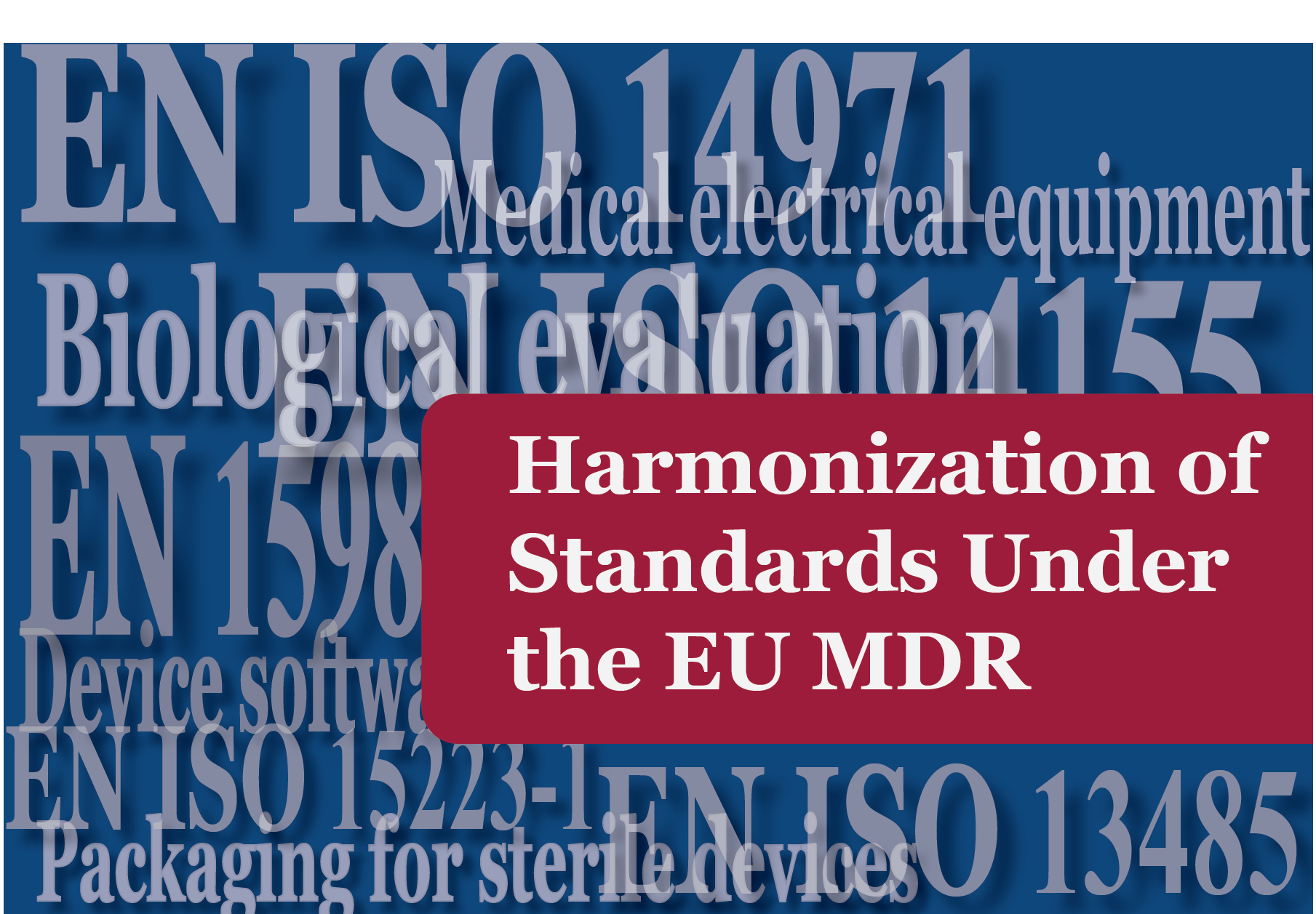The new EU MDR and the new IVDR have some harmonized standards also known as recognized standards. The harmonized standards are those that are referenced in the Official Journal of the European Union. Devices that comply with these harmonized standards are considered to be in compliance with the MDR and IVDR.
The conformity may be to the quality system as a whole or just specific component like risk management system, post-market surveillance system, clinical investigation or evaluations. For a standard to be harmonized with the MDR and IVDR, a standardization request has to be agreed upon between the European Commission and the European Standards Organizations.
The draft standardization request lists the standards to be revised and the deadline for their adoption. Some standards have a higher priority for adoption. Most of these high priority standards are the ones that apply to a wide range of manufacturers.
Some standards that support the MDR with a deadline of adoption of May 2020 are:1
- EN ISO 13485 – Medical devices – Quality management systems – Requirements for regulatory purposes
- EN ISO 14971- Medical devices – Application of risk management to medical devices.
- EN ISO 14155 – Clinical investigation of medical devices for human subjects – Good clinical practice;
- EN ISO 15223-1 – Medical devices – Symbols to be used with medical device labels, labeling and information to be supplied – Part 1: General requirements;
- EN 15986 – Symbol for use in the labeling of medical devices – Requirements for labeling of medical devices containing phthalates.
For the MDR, in addition to the above, there are 63 new or revised standards identified with the longer deadline for adoption of 27 May 2024. These include standards for:1
- Validation and routine control of sterilization and aseptic processing;
- Packaging for sterile devices;
- Biological evaluation;
- Devices using tissues of animal origin;
- Medical electrical equipment;
- Device software;
- Usability engineering.
Many standards committees are already working on amending or revising the standards in their areas of responsibility. The processes of revising EN ISO 14971 and amending EN ISO 13485 are underway. It will be interesting to know what other standards get incorporated into the harmonized standards list of the EU MDR.
Want to market your device in the EU? Do you need help complying with the new EU MDR? Contact us at 248-987-4497 or email us at info@emmainternational.com.
1BSI (August 2019) Harmonization of standards under the regulations for medical devices moves forward slowly retrieved on 08/28/2019 from https://compliancenavigator.bsigroup.com/en/medicaldeviceblog/harmonization-of-standards-under-the-regulations-for-medical-devices-moves-forward-slowly/?utm_source=pardot&utm_medium=email&utm_campaign=SM-SUB-LG-HLTH-CN_blog-2019






